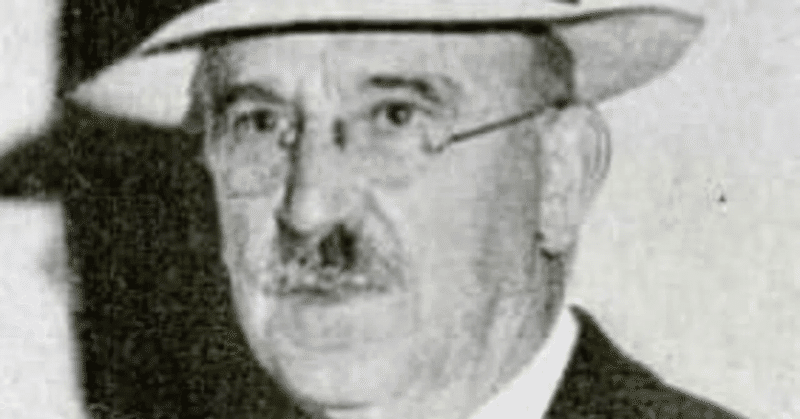
Pragmatistic origin of Gendlin's en#0: with reference to Dewey and Mead
In “A process model,” en#0 is mentioned less often than en#2 and en#3. Nevertheless, it has been pointed out that “just because it gets rarely mentioned doesn’t mean it is not structurally important.” (Jaaniste, 2021, April). There are many possible backgrounds for Gendlin’s deliberate assumption of en#0. In my opinion, one of the anticipations of en#0 can be found in the concept of the “natural world” that appears in Dewey’s later work, “Logic: The Theory of Inquiry” (Dewey, 1938). Finally, I suggest that we can see some points in the ideas and terminology of en#0 that are closer to Mead than to Dewey.
1. “Natural world” in “Logic: the theory of inquiry”
In the later work, “Logic: The Theory of Inquiry,” Dewey discusses something not explicitly mentioned in his earlier work, “Experience and Nature.” It refers to things or a world that have not yet interacted with the organism.
There are things in the world that are indifferent to the life-activities of an organism. But they are not parts of its environment, save potentially. (Dewey, 1938, p. 25; 1986, p. 32)
There is, of course, a natural world that exists independently of the organism, but this world is environment only as it enters directly and indirectly into life-functions. The organism is itself a part of the larger natural world and exists as organism only in active connections with its environment. (Dewey, 1938, pp. 33-4; 1986, p. 40)
In other words, in the later work, Dewey clearly acknowledges the (potential) existence of things that have not yet interacted with organisms. However, on the other hand, according to Dewey’s definition in this work, “without entering into the life function, such a thing may belong to the “natural world,” but it still cannot be said to belong to the “environment.”
2. Gendlin’s extension of the concept of “environment”
Gendlin also acknowledges the (potential) existence of something that has not yet interacted with the body in the first Chapter of “A Process Model.” He extends Dewey’s definition of “environment” to include such things and the world.
However, Gendlin distinguishes by calling the environment of those that actually enter the life functions “en#2” and those that have not yet entered the life functions “en#0”.
En#0 is a fourth type. Something may some day affect the life process and be en#2, but is not now.... Since this has no reality as en#2, and since en#3 is the result of en#2, we need a term for "environment" that has never been functioning in a life process. (Gendlin, 2018, pp. 7-8)
Thus, it can be said that Dewey and Gendlin introduce similar classifications, although they differ in the scope of what they refer to by the term “environment.”
3. Gendlin’s thoroughness of Dewey’s contemplation
Dewey discusses the equivalent of en#0 in “Logic: The Theory of Inquiry” outside of the passages I cited earlier.
It follows that with every differentiation of structure the environment expands. For a new organ provides a new way of interacting in which things in the world that were previously indifferent enter into life-functions. (Dewey, 1938, p. 25; 1986, p.32)
However, Gendlin would probably not say, “a new organ provides a new way of interacting”. He would not have envisioned pre-separated, fixed organs or systems to which they belong.
The spectator could formulate complete and distinct strings of separate processes, for example, digestive, respiratory, reproductive, etc. These are not separate all along their way, nor are their subprocesses at the microscopic level. (Gendlin, 2018, p. 23)
4. Mead’s idea of “sensitivity”
Gendlin revisits the concept of en#0 in “Chapter V-A: Intervening Events” of APM. That is, “How does the organism develop new sensitivities to the en?” (Gendlin, 2018, pp. 71-2) and answers the question as follows:
We have now answered our first question. We have derived an increasing capacity to be affected by the environment or, as we also put it, the body’s engaging the environment in ever new ways (en#0 becoming en#2). (Gendlin, 2018, p. 79)
About the terminology in Chapter V-A, it may be said that Gendlin deepened his considerations by inheriting Mead’s idea of “sensitivity” rather than Dewey’s:
If in the development of the [life] form there is an increase in the diversity of sensitivity there will be an increase in the responses of the organism to its environment, that is, the organism will have a correspondingly larger environment. (Mead, 1934, p. 245)
References
Dewey, J. (1929). Experience and nature (2nd ed.). Open Court.
Dewey, J. (1938). Logic: the theory of inquiry. Henry Holt.
Dewey, J. (1981). Experience and nature (The later works, 1925-1953 / John Dewey, Vol. 1, edited by J. A. Boydston). Southern Illinois University Press.
Dewey, J. (1986). Logic: the theory of inquiry (The later works, 1925-1953 / John Dewey, Vol. 12, edited by J. A. Boydston). Southern Illinois University Press.
Gendlin, E. T. (2018). A process model. Northwestern University Press.
Jaaniste, L. (2021, April). Posting to “A Process Model Study Group” (Facebook)
この記事が気に入ったらサポートをしてみませんか?
